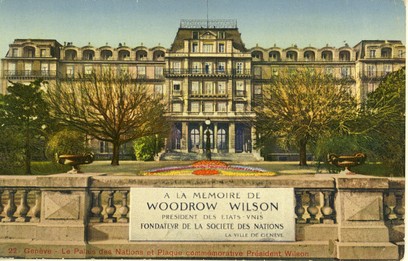Hidden Legacies: How Discontinued International Organizations Have Shaped European Governance since the 1910s (InechO)
What happens after international organizations (IOs) cease to exist?
While IOs’ ends are occasionally discussed, we know very little about their legacies. InechO aims to elucidate the subsequent role and impact of people, ideas, practices and objects (including buildings and budgets) that once filled IOs with life and meaning.

Palais Wilson, first seat of the League of Nations until 1936, then of the Secretariat of the International Bureau of Education, now headquarters of the United Nations High Commissioner for Human Rights. Woodrow Wilson Presidential Library Archives.
InechO analyzes the long period since the 1910s and highlights five empirical case-studies. It hypothesizes that for a full understanding of international history and questions of political governance more broadly, it is indispensable to consider the legacy and impact of liquidated IGOs. InechO, thus, revisits history not just to gain a better understanding of the “afterlife” of International Organizations in the past but also to shed new light on international cooperation more broadly and to generate new knowledge of what the past can tell us for today.
InechO is a ERC (European Research Council) funded research project (Grant Agreement Number: 101096005).


